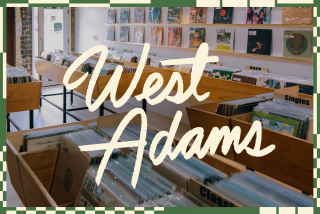Vintage SoCal: Pasadena Craftsman set the stage for the Greenes’ style
- Share via
A signature style emerges over time.
Brothers Charles and Henry Greene were still evolving as architects in the early 1900s when they put their Arts and Crafts stamp on the Duncan-Irwin House in Pasadena. This predecessor of the famed Gamble House set a high bar for that later Craftsman landmark in terms of beauty and detail.
Seamstress and dress designer Katherine Duncan, the first of the two owners for whom the house is named, bought the lot in 1901 and moved a foursquare cottage to the site. She added a second story and a few years later sold to the independently wealthy Theodore Irwin Jr., who once again enlarged the dwelling.
The Greenes’ redesign, adorned with overhanging eaves and exposed rafter tails, centers on a courtyard that opens to a second-story mezzanine. Balconies and terraces link indoor and outdoor spaces.
A sturdy pergola supported by clinker brick and boulder columns marks one of the home’s entryways. A broad stained-glass door with a wisteria vine motif adorns another.
Woodwork with mortise and tenon joints, original and restored hardware and tile-faced fireplaces are found throughout the nearly 6,000 square feet of living space. Including the guesthouse, there are eight bedrooms and eight bathrooms.
The half-acre of grounds also contain an irregular-shaped swimming pool, which was a later addition.
The canyon- and mountain-view property, listed for sale at $4.698 million, is on the National Register of Historic Places. The listing agents for 240 N. Grand Ave., Pasadena, are Peter Martocchio and David Goldberg, both with Sotheby’s International Realty.
This occasional feature celebrates Southern California’s architectural heritage through residences built before 1960. Submit candidates for Vintage SoCal to [email protected].
More to Read
Sign up for Essential California
The most important California stories and recommendations in your inbox every morning.
You may occasionally receive promotional content from the Los Angeles Times.







